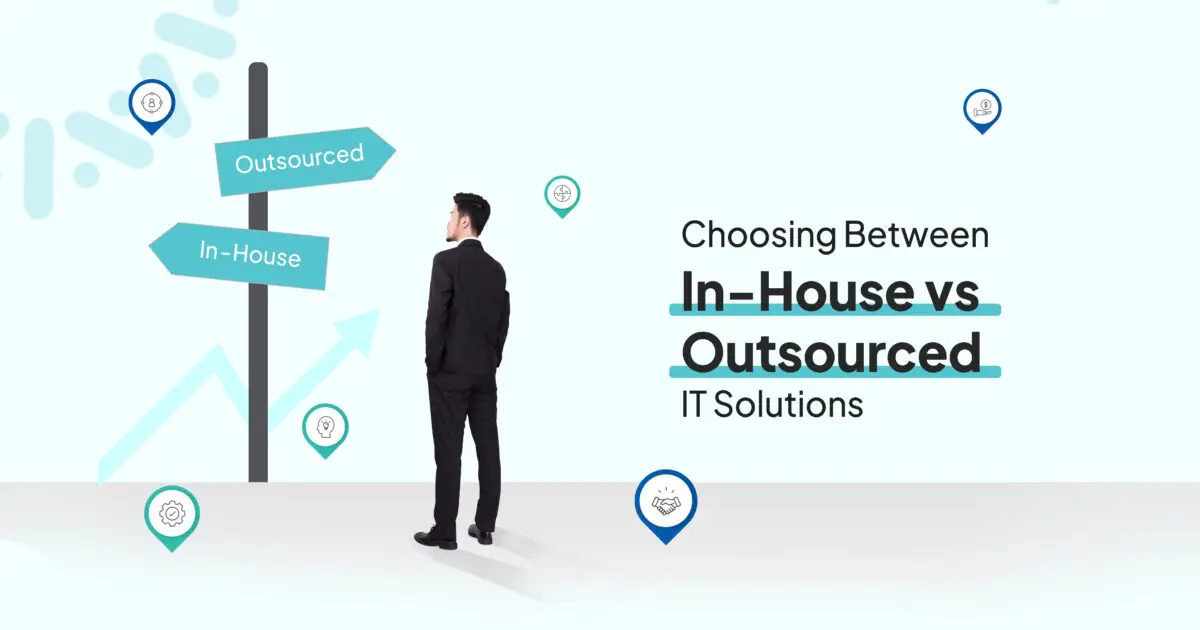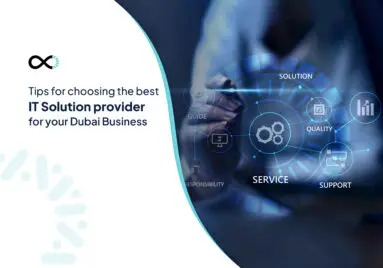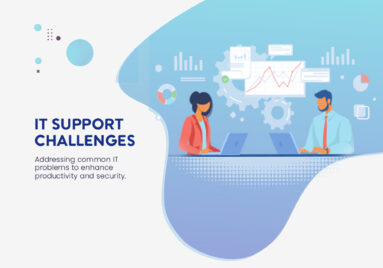The decision between opting for in-house IT solutions or outsourcing IT services is one that businesses face at various stages of growth. It is a choice that impacts operations, costs, and even long-term strategy. In today’s digital world, where technology drives success, finding the right approach for your business is crucial.
Both in-house and outsourced IT solutions offer unique benefits and drawbacks. While one might provide better control, the other could deliver cost-effectiveness and expertise. This blog will explore these two approaches in detail, comparing their advantages and limitations. We will also provide guidance on how to decide which solution aligns best with your business needs.
By understanding the nuances of in-house and outsourced IT solutions, you can make an informed decision that supports your operational goals and ensures smooth IT management.
Understanding In-House IT Solutions
Definition and Overview
In-house IT solutions refer to having a dedicated IT team within your organization. This team is responsible for managing all technology-related tasks, including troubleshooting, system updates, and cybersecurity measures. In-house IT is a common choice for businesses with specific, ongoing IT needs.
The internal team often works closely with other departments, ensuring seamless integration of technology into business processes. While it demands a significant investment in hiring and training, it provides greater control over IT operations.
Key Advantages of In-House IT
- Direct Oversight: One of the primary benefits is having complete control over IT operations. The team is always available, offering immediate solutions to problems.
- Tailored Solutions: In-house teams can customize IT strategies to align with business goals. This personalization ensures optimal performance.
- Collaboration and Communication: Proximity allows the IT team to work closely with other departments, fostering better collaboration and understanding.
Challenges Associated with In-House IT
- High Costs: Salaries, benefits and training fees are all part of the cost of running an in-house workforce. For small businesses, this can strain budgets.
- Limited Expertise: It is challenging to build a team with expertise in diverse IT areas. This limitation can hinder operations.
Scalability Issues: Expanding IT capabilities in-house can be slow and expensive, especially during rapid growth.
Understanding Outsourced IT Solutions
Definition and Overview
Outsourced IT solutions involve delegating IT tasks to an external service provider. These providers specialize in various IT services, including cloud computing, network management, and cybersecurity. Outsourcing is a popular choice for businesses looking to minimize costs and access expert-level IT support.
This model enables businesses to focus on their main activities while the external provider manages IT operations. It is especially useful for small and medium-sized businesses that lack the resources to support an in-house workforce.
Key Advantages of Outsourcing IT
- Cost-Effective: Outsourcing reduces the need to hire and train an in-house workforce, lowering overhead costs.
- Access to Expertise: IT service providers bring specialized knowledge, staying updated on the latest technologies and trends.
- Scalability: Outsourcing offers flexibility, allowing businesses to scale services up or down based on demand.
Challenges of Outsourcing IT
- Lack of Control: Handing over IT operations to an external provider may limit direct oversight and influence.
- Security Concerns: Sharing sensitive data with an external party can raise security risks.
- Communication Barriers: Working with an external provider can sometimes lead to miscommunication or delays in addressing issues.
Comparing In-House vs. Outsourced IT Solutions
Cost Implications
In-house IT often involves higher upfront costs due to hiring, infrastructure, and training. On the other hand, outsourcing offers predictable monthly expenses, making it more budget-friendly for smaller companies.
Scalability and Flexibility
Outsourcing increases flexibility, allowing firms to change IT services as needed. In comparison, growing an in-house staff can be time-consuming and expensive.
Security and Control
While in-house IT provides better control over sensitive data, outsourcing requires trust in the provider’s security measures. Each approach carries unique risks and benefits in terms of security.
Factors to Consider When Deciding
Nature of Your Business
For businesses requiring constant IT innovation, an in-house team may be more suitable. However, companies focusing on cost-efficiency and specialized support might prefer outsourcing.
Budget Constraints
If resources are limited, outsourcing IT can help reduce financial strain while still ensuring quality services. Conversely, larger businesses with higher budgets might find in-house solutions more feasible.
IT Requirements and Expertise Needed
The complexity of your IT needs plays a significant role. Specialized tasks might necessitate external expertise, whereas simpler needs can be managed internally.
Conclusion: Making the Right Choice
Choosing between in-house and outsourced IT solutions depends on your business goals, budget, and IT requirements. Each option has distinct advantages and limitations, so it’s essential to evaluate your needs thoroughly. By aligning your choice with your strategic objectives, you can optimize IT operations and drive business success.





